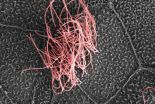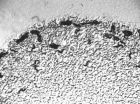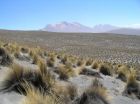(Press-News.org) Iron is a popular topic in health news. Doctors prescribe it for medical reasons, and it's available over the counter as a dietary supplement. And while it's known that too little iron can result in cognitive problems, it's also known that too much promotes neurodegenerative diseases.
Now, researchers at UCLA have found that in addition to causing cognitive problems, a lack of iron early in life can affect the brain's physical structure as well.
UCLA neurology professor Paul Thompson and his colleagues measured levels of transferrin, a protein that transports iron throughout the body and brain, in adolescents and discovered that these transferrin levels were related to detectable differences in both the brain's macro-structure and micro-structure when the adolescents reached young adulthood.
The researchers also identified a common set of genes that influences both transferrin levels and brain structure. The discovery may shed light on the neural mechanisms by which iron affects cognition, neurodevelopment and neurodegeneration, they said.
Their findings appear in the current online edition of the journal Proceedings of the National Academy of Sciences.
Iron and the proteins that transport it are critically important for brain function. Iron deficiency is the most common nutritional deficiency worldwide, causing poor cognitive achievement in school-aged children. Yet later in life, iron overload is associated with damage to the brain, and abnormally high iron concentrations have been found in the brains of patients with Alzheimer's, Parkinson's and Huntington diseases.
Since both a deficiency and an excess of iron can negatively impact brain function, the body's regulation of iron transport to the brain is crucial. When iron levels are low, the liver produces more transferrin for increased iron transport. The researchers wanted to know whether brain structure in healthy adults was also dependent on transferrin levels.
"We found that healthy brain wiring in adults depended on having good iron levels in your teenage years," said Thompson, a member of UCLA's Laboratory of Neuro Imaging. "This connection was a lot stronger than we expected, especially as we were looking at people who were young and healthy — none of them would be considered iron-deficient.
"We also found a connection with a gene that explains why this is so. The gene itself seems to affect brain wiring, which was a big surprise," he said.
To assess brain volume and integrity, Thompson's team collected brain MRI scans on 615 healthy young-adult twins and siblings, who had an average age of 23. Of these subjects, 574 were also scanned with a type of MRI called a "diffusion scan," which maps the brain's myelin connections and their strength, or integrity. Myelin is the fatty sheath that coats the brain's nerve axons, allowing for efficient conduction of nerve impulses, and iron plays a key role in myelin production.
Eight to 12 years before the current imaging study, researchers measured the subjects' blood transferrin levels. They hoped to determine whether iron availability in the developmentally crucial period of adolescence impacted the organization of the brain later in life.
"Adolescence is a period of high vulnerability to brain insults, and the brain is still very actively developing," Thompson said.
By averaging the subjects' transferrin levels, which had been assessed repeatedly — at 12, 14 and 16 years of age — the researchers estimated iron availability to the brain during adolescence, he said.
The team discovered that subjects who had elevated transferrin levels — a common sign of poor iron levels in a person's diet — had structural changes in brain regions that are vulnerable to neurodegeneration. And further analyses of the twins in the study revealed that a common set of genes influences both transferrin levels and brain structure.
One of the genetic links — a specific variation in a gene called HFE, which is known to influence blood transferrin levels — was associated with reduced brain-fiber integrity, although subjects carrying this gene variant did not yet show any symptoms of disease or cognitive impairment.
"So this is one of the deep secrets of the brain," Thompson said. "You wouldn't think the iron in our diet would affect the brain so much in our teen years. But it turns out that it matters very much. Because myelin speeds your brain's communications, and iron is vital for making myelin, poor iron levels in childhood erode your brain reserves which you need later in life to protect against aging and Alzheimer's.
"This is remarkable, as we were not studying iron deficient people, just around 600 normal healthy people. It underscores the need for a balanced diet in the teenage years, when your brain's command center is still actively maturing. "
The findings, he said, may aid future studies of how iron transport affects brain function, development and the risk of neurodegeneration.
INFORMATION:
Other authors on the study included first author Neda Jahanshad, Omid Kohannim, Derrek P. Hibar, Jason L. Stein and Arthur W. Toga, all of UCLA; Katie L. McMahon and Greig I. de Zubicaray of the University of Queensland in Brisbane, Australia; and Sarah E. Medlande, Grant W. Montgomerye, John B. Whitfielde, Nick G. Martine and Margie J. Wright of the Queensland Institute of Medical Research in Herston, Australia.
The research was supported by the National Institute of Child Health and Human Development; Australia's National Health and Medical Research Council; the Achievement Rewards for College Scientists Foundation; the National Institute of Mental Health; and the Australian Research Council Future Fellowship.
The UCLA Laboratory of Neuro Imaging, which seeks to improve understanding of the brain in health and disease, is a leader in the development of advanced computational algorithms and scientific approaches for the comprehensive and quantitative mapping of brain structure and function. The laboratory is part of the UCLA Department of Neurology, which encompasses more than 20 disease-related research programs, along with large clinical and teaching programs. The department ranked first among its peers nationwide in National Institutes of Health funding (2002-09).
For more news, visit the UCLA Newsroom and follow us on Twitter
END
La Jolla ---- Scientists at the Salk Institute for Biological Studies have identified a gene that tells cells to develop multiple cilia, tiny hair-like structures that move fluids through the lungs and brain. The finding may help scientists generate new therapies that use stem cells to replace damaged tissues in the lung and other organs.
"Cells with multiple cilia play a number of important roles, including moving fluids through the respiratory tract, brain and spinal cord," says Christopher R. Kintner, a professor in Salk's Molecular Neurobiology Laboratory, who led ...
PASADENA, Calif.— Scientists have long seen evidence of social behavior among many species of animals, both on the earth and in the sea. Dolphins frolic together, lions live in packs, and hornets construct nests that can house a large number of the insects. And, right under our feet, it appears that nematodes—also known as roundworms—are having their own little gatherings in the soil. Until recently, it was unknown how the worms communicate to one another when it's time to come together. Now, however, researchers from the California Institute of Technology (Caltech) and ...
Sufferers of smoking related lung diseases could have their debilitating symptoms reduced following the discovery of a potential new treatment.
The discovery, by researchers at the University of Melbourne, Royal Melbourne Hospital, Australia, and the Brigham and Women's Hospital, Harvard Medical School, US, could dramatically improve treatments and slow the progression of COPD (Chronic Obstructive Pulmonary Disease) which includes the incurable condition emphysema.
COPD is a progressive disease that makes it hard to breathe and is mostly caused by excessive smoking. ...
FRESNO, Calif. – Can eating grapes slow or help prevent the onset of age-related macular degeneration (AMD), a debilitating condition affecting millions of elderly people worldwide? Results from a new study published in Free Radical Biology and Medicine suggest this might be the case. The antioxidant actions of grapes are believed to be responsible for these protective effects.
The study compared the impact of an antioxidant-rich diet on vision using mice prone to developing retinal damage in old age in much the same way as humans do. Mice either received a grape-enriched ...
Fungi may be unexpected allies in our efforts to keep hazardous lead under control. That's based on the unexpected discovery that fungi can transform lead into its most stable mineral form. The findings reported online on January 12 in Current Biology, a Cell Press publication, suggest that this interaction between fungi and lead may be occurring in nature anywhere the two are found together. It also suggests that the introduction or encouragement of fungi may be a useful treatment strategy for lead-polluted sites.
"Lead is usually regarded as a pretty stable substance," ...
CHESTNUT HILL, MA (Jan. 12, 2012) – Researchers from Boston College have discovered a protein that plays a pivotal role in the progression of the deadly diseases toxoplasmosis and malaria and shown that its function could be genetically blocked in order to halt the progress of the parasite-borne illnesses, the team reports in the current edition of the journal Science.
The protein, identified as DOC2.1, plays a similar role in the secretion of microneme organelles that are crucial to the mobility of the parasitic protozoa Toxoplasma gondii, which causes toxoplasmosis, ...
Preserving diverse plant life will be crucial to buffer the negative effects of climate change and desertification in in the world's drylands, according to a new landmark study.
The findings of the multi-author study, published today in the journal Science, are based on samples of ecosystems in every continent except Antarctica.
They confirm for the first time that the more diverse an ecosystem is, the more ecological functions it performs. It also has implications for carbon sequestration and soil health.
"This is the most extensive study of the links between function ...
Land areas that are a priority for wildlife conservation provide relatively high levels of ecosystem services such as pollination, water purification, food production, and climate regulation, so safeguarding them is expected to benefit people. Assessing these benefits to populations in ways that are useful to decisionmakers who guide conservation efforts has, however, proved difficult.
A global analysis published in the January 2012 issue of BioScience by Will R. Turner of Conservation International and his colleagues breaks new ground by analyzing the flow of benefits ...
Archaeologists examining late period Mayan containers have identified nicotine traces from a codex-style flask, revealing the first physical evidence of tobacco use by ancient Mayans. The study published in Rapid Communications in Mass Spectrometry reveals the flask is marked with Mayan hieroglyphics reading, "y-otoot 'u-may," ("the home of its/his/her tobacco,") making it only the second case to confirm that the text on the exterior of a Mayan vessel corresponds to its ancient use.
"Investigation of food items consumed by ancient people offers insight into the traditions ...
Scientists from IBM and the German Center for Free-Electron Laser Science (CFEL) have built the world's smallest magnetic data storage unit. It uses just twelve atoms per bit, the basic unit of information, and squeezes a whole byte (8 bit) into as few as 96 atoms. A modern hard drive, for comparison, still needs more than half a billion atoms per byte. The team present their work in the weekly journal Science this Friday (13 January 2012). CFEL is a joint venture of the research centre Deutsches Elektronen-Synchrotron DESY in Hamburg, the Max-Planck-Society (MPG) and the ...


